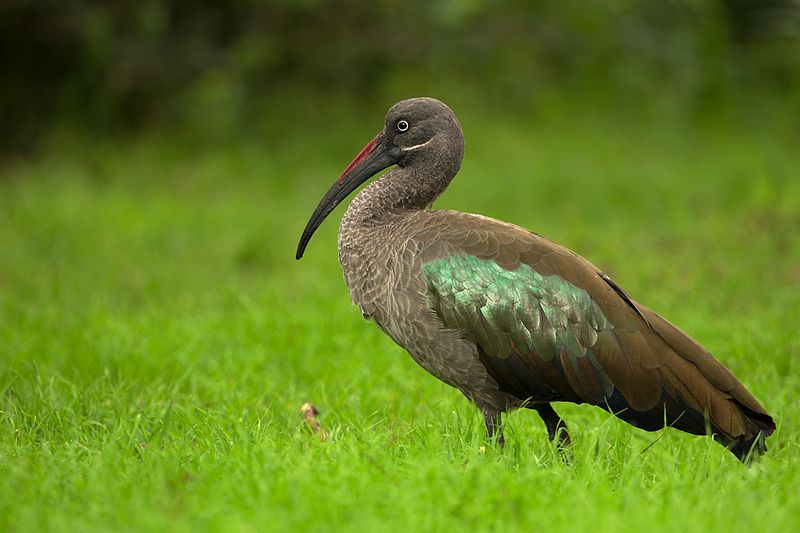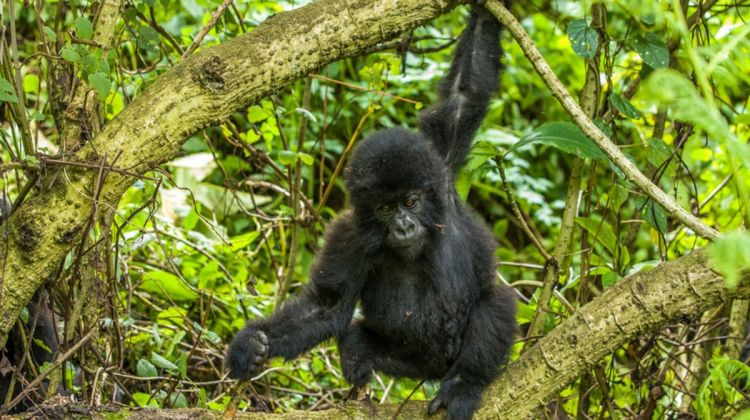
Google Doodle Celebrates Fossey, Mountain Gorillas
What would have been the 82nd birthday of our founder, Dr. Dian Fossey, was made extra special with a commemorative Google Doodle on Jan. 16 this year. The Doodle transformed the Google logo into a vivid illustration of Fossey’s life and legacy, featuring an image of Fossey herself as well as the mountain gorillas she loved and the Afro-montane rainforest where they make their home.
Google Doodler artist Mike Dutton contacted the Fossey Fund for advice about the image. He had started his research by reading Fossey’s 1983 memoir, Gorillas in the Mist.
“It was a fascinating read,” Dutton said. “It was full of personal memoirs and stories, and sort of her own mix of emotions with scientific research. For me, as an illustrator, I’m a storyteller, and that story really grabbed hold of me.”
It’s certainly possible to see the influence of Gorillas in the Mist in the imagery laced throughout the Doodle. Fossey staff then offered Dutton some ideas beyond what he found in the book, including a contemporary perspective on Dian Fossey’s work. The final product involved a Fossey-related vignette within each letter of the Google logo.
Dutton described the illustrations within each letter. The “G ,” he explained, was inspired by Fossey’s description of her flight over the Virunga volcanoes, where the mountain gorillas live. “It was this kind of amazing juxtaposition where you think this land is so vast—there are these huge mountains and millions of years of history there. So there’s that on the one hand, but on the other hand, this entire species is confined to just this mountain range and there were only a couple hundred of them at that point,” he said.
Dutton represented a mountain gorilla family group together within the two “O” letters because of the importance of the family group in gorilla society. He placed the gorillas on a tree to indicate the idea of a family tree. Indeed, because of the close observation of individual gorillas pioneered by Fossey, the Dian Fossey Gorilla Fund can construct family trees for many of the 120 mountain gorillas it monitors today.
The second “G” was devoted to a moment in Gorillas in the Mist when Fossey describes one of her first close encounters with the mountain gorillas, where she could see them peering back at her through the vegetation. Dutton drew a close-up of a gorilla face, which he said was inspired by Fossey’s favorite gorilla, silverback Digit. While Dutton did not go so far as to represent Digit’s nose print — the unique pattern of wrinkles on the nose that Fossey and contemporary scientists would have used to identify him — he represented some of Digit’s other features to acknowledge the silverback’s significance in Dian Fossey’s personal journey.
The “L” referred to a photograph of Fossey and a female gorilla called Puck that Fossey staff recommended to Dutton. In the photo, Puck is reaching out to touch Fossey. Although this photo is emblematic of Fossey’s pioneering success in habituating gorillas, since Fossey’s time, scientists have learned that gorillas can contract diseases from humans, and the close physical contact Dian sometimes shared with gorillas is no longer acceptable for researchers, tourists, or the teams of trackers that visit gorillas daily. “That was actually really valuable feedback for me, because while I wanted to be true to Dian’s legacy, I also wanted to spread that message of awareness today,” Dutton said. He succeeded in creating an image where a gorilla reaches out to Dian, showing the gorilla’s comfort with the researcher, without Dian returning the physical contact.
Dutton described illustrating letter “E” as a bit of a struggle. Ultimately, he decided to represent a group of gorillas spread out and surrounded by mist. “We’re sort of looking at their fate,” Dutton said. “Should we be looking at it feeling hopeful or concerned?” Ultimately, he said, “The ‘E’ should mean ‘end’ or ‘enduring.’”
The positive response to the Google Doodle from people all over the world seems to show ongoing public interest in Dian Fossey’s work and the struggle to save the critically endangered mountain gorilla.
When asked about the most surprising thing he learned during his research for the Doodle, Dutton said that he was most surprised by his experience of “becoming very emotionally invested in today’s situation and reading about that and trying to understand that a little bit more.” He expressed hope that the visual storytelling of the Doodle encourages people to learn more about the history of Dian Fossey and the situation of mountain gorillas today.



